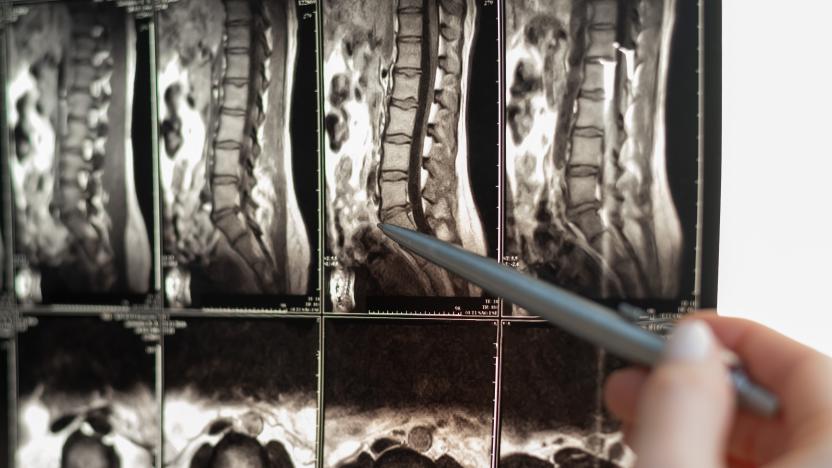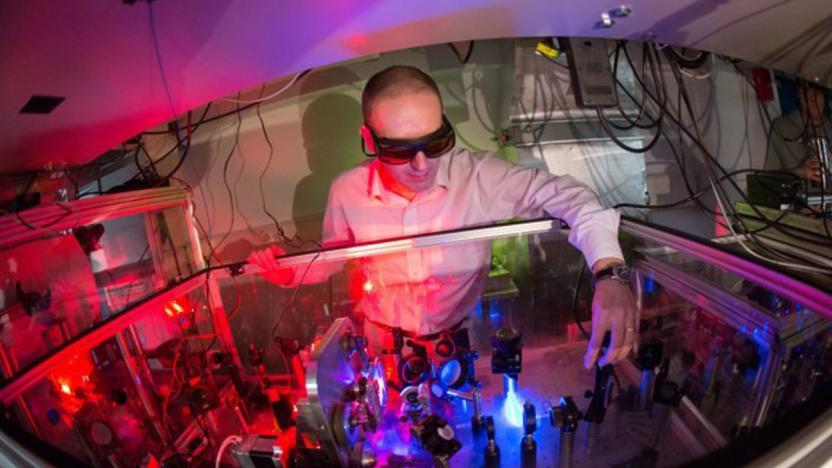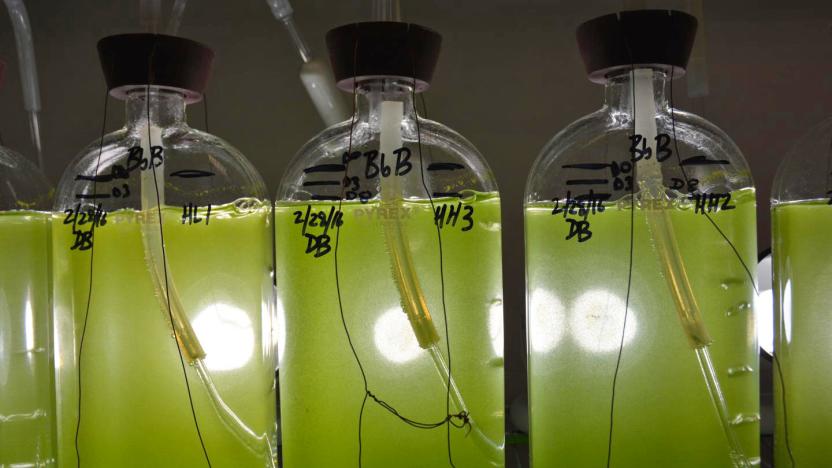enzyme
Latest

AI discovery could advance the treatment of spinal cord injuries
Scientists have used a combination of AI and robotics to develop an enzyme that could treat spinal cord injuries and help people walk again.

DNA synthesis breakthrough could lead to faster medical discoveries
For all of the advancements in genetic research, DNA synthesis hasn't changed much in over four decades. That could make it a serious obstacle to scientists who are otherwise racing to develop a new drug or understand the human body. It might finally catch up to modern technology, however. A group at the Berkeley-based BioEnergy Institute have devised a synthesis technique that promises to be faster, more accurate and affordable. If all goes smoothly, it could significantly accelerate the pace of medical and biochemical discoveries.

Scientists accidentally produce an enzyme that devours plastic
There are research teams around the world dedicated to finding a remedy for the growing plastic pollution crisis, but now it seems that one group of scientists have found a feasible answer -- and they stumbled upon it by accident. Researchers studying a newly-discovered bacterium found that with a few tweaks, the bug can be turned into a mutant enzyme that starts eating plastic in a matter of days, compared to the centuries it takes for plastic to break down in the ocean.

Researchers discover a better way to make ammonia
For the past century or so, we've been making ammonia the same way that Nobel-prize winning chemist Fritz Haber did: by smashing hydrogen and nitrogen gas together at 250 atmospheres and heating them to nearly 1000 degrees F. But a new method developed at the University of Utah turns that process on its head.

Ultrafast lasers capture elusive photosynthesis reactions
Using ultra-rapid lasers, researchers have created the first "movie" of photosynthesis chemical reactions that shows exactly how fast they happen. The finding proves that a key process that strips electrons from water, starting the conversion of solar into chemical energy, happens more quickly than previously thought. "We can now see how nature has optimized the physics of converting light energy to fuel," says study author Jasper van Thor. The work could help scientists improve artificial photosynthesis to produce biofuels more efficiently.

Algae's enzyme might hold the secret to mass producing biofuel
A common microscopic pond and lake alga named Botryococcus braunii makes big amounts of liquid hydrocarbons that can be used to make biofuel. Problem is, we can't use the organism itself as a source, because it grows very slowly. A group of scientists from Texas A&M AgriLife Research, however, is looking into what genes are responsible for producing its enzyme that initiates the production of oil. See, the group wants to replicate its ability to make big amounts of oil in other plants more suitable for mass production. And they think the key is to express the enzyme's associated genes in those other organisms, such as faster-growing algae.

Scientists map world first 3D image of cancer-spreading protein
Scientists at Griffith University's Institute for Glycomics released the world's first 3-D image of a protein that is linked to the spread of cancer. Where before scientists had to guess what the structure looked like, now they have a clear 3-D model meaning they can see how it works and develop targeted medicines to stop it before the protein can make matters worse. It was mapped using a technique called X-Ray crystallography and the team, lead by the institute's Director Professor Mark von Itzstein, notes that the image is so well defined that it shows both the structure of the overall protein as well as atomic-level details.

MIT crafts analog circuits from living bacteria
Previous work on using organisms as circuitry has usually involved shoehorning parts of the digital world into a very analog environment. MIT has just found an approach that uses the subtlety of the natural world to its advantage: the circuits themselves are analog. By combining genes that produce similar molecules in response to different inputs, the school's scientists have created bacterial cells that perform basic math -- the exact quantity or ratio of a given molecule is the answer. The approach offers a much wider range of results than a binary circuit (10,000 versus 2), and it exploits the cell enzymes' inherent ratio awareness to do some of the hard work. MIT wants more variety in genetic ingredients before it can produce a truly universal system, but its work could lead to organic sensors that are much simpler and more precise than their digital peers.

Virginia Tech learns how to get hydrogen from any plant, might lower fuel cell costs
Hydrogen fuel cell cars have any number of hurdles to overcome, whether it's widespread adoption or the basic matter of locating a place to fill up. If a Virginia Tech discovery pans out, getting the fuel itself won't be one of those challenges. The new combination of a polyphosphate with a special blend of enzymes lets researchers extract meaningful quantities of hydrogen from any biological element that includes xylose -- in other words, the sugar that's present in every plant to at least some degree. The process is potentially more eco-friendly than most, as well. While you'd expect it to be renewable given the main ingredients, it also reduces the need for metals and cuts back sharply on the volume of necessary greenhouse gases. Most importantly, the findings could reach the commercial world as soon as three years from now. If they do, they could lower the price of hydrogen fuel by making it more accessible, all the while avoiding much of the guilt trip that comes with using polluting technology to generate clean energy.

MIT crafts genetic circuits that remember their work through DNA
It's easy to find work on gene-based storage; finding genes that will do any of the heavy lifting is another matter. MIT believes it has a genetic circuit that will finally get to work, and then some. In using recombinase enzymes to alter DNA sequences serving as logic gates, researchers have developed a cellular circuit that not only mimics its silicon cousins, but has its own built-in memory. As the gate activation makes permanent changes to a given DNA sequence, any gate actions stay in memory for up to 90 generations -- and will hang around even if the cell's life is cut short. MIT sees its technique as having ultimate uses for areas where longer-term memory is important, such as environmental sensors, but could also see varying output values helping with digital-to-analog converters and other devices where there's a need for more precision. While there's no word on imminent plans for real-world use, the development raises the possibility of processors that could skip the traditional memory cache as they pass info down the family tree.

Harvard scientists reverse aging in mice, laugh maniacally at human possibilities
The reversal of aging has been one of the great dreams of humanity, but it seems like our rodent overlords have beat us to it. The Harvard Medical School has demonstrated "a dramatic reversal" in the aging process when reintroducing the enzyme telomerase into old and feeble mice. What happened was that their naturally worn out organs started to regenerate, instead of degenerating further, bringing them back to a youthful state of health. Sadly, while the results of this study are hugely important, there are a couple of caveats to make: firstly, the mice in question were genetically modified to suffer from a lack of telomerase, which might have inflated the results of the tests relative to regular mice, but more importantly, an increase in telomerase in humans is "a hallmark of most human cancers." So, if you want a shot of Benjamin Button brew, you'll have to be very patient indeed. For now, let's just be happy that Algernon and his buddies have found their fountain of youth. [Thanks, Vygantas]





